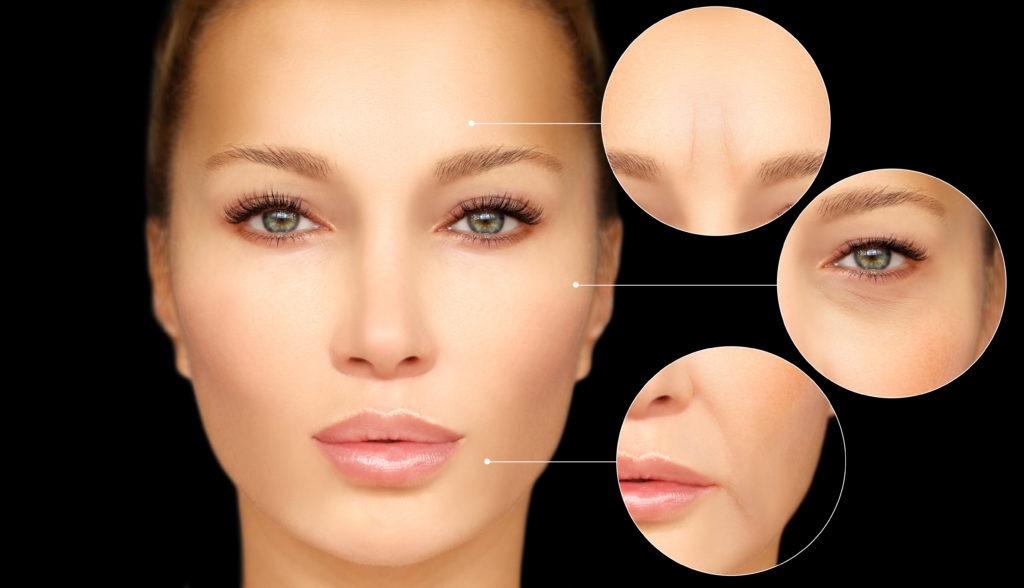Dermal fillers are becoming increasingly popular and widely used to reduce facial wrinkles and restore skin to a smoother and fuller appearance. This article provides an introduction to dermal fillers and explains how they can be used to correct or reduce the signs of aging.
What are dermal fillers?
Dermal fillers are a type of injectable, biocompatible gel used to diminish facial lines and restore volume and fullness in the face.
Specifically, dermal fillers can:
• Soften facial lines and wrinkles
• Plump lips
• Enhance shallow contours
• Improve the appearance of scars
• Reconstruct contour deformities in the face
Treatment with cosmetic injectable fillers is minimally invasive; in other words, no surgery is required.
How long do the results of dermal fillers last?
The results of dermal fillers can last anywhere from four months to a year or longer, but are dependent on the age of the skin, the size of the treatment area, and the type of dermal filler used.
Dermal fillers are temporary treatments for facial aging; repeated treatments are required for long-term results.
Who is qualified to administer injectable dermal fillers?
Only medical aesthetics injectors trained in each type of cosmetic injectable filler are qualified to administer it.
What can I expect from the medical aesthetics injector administering dermal fillers?
A trained and qualified medical aesthetics injector should provide patients with detailed information about what to expect from a dermal filler treatment, including possible side effects. She should also discuss treatment expectations, costs, and the possibility of any follow-up treatments. Finally, she should answer all your questions regarding treatment, products used, and aftercare.
How are dermal fillers administered?
After developing a customized treatment plan for you, a medical aesthetics injector will first cleanse and prepare the area to be treated. Then, she will inject the clear gel dermal filler into the treatment area using an ultra-fine needle. Multiple injections may be required for each treatment area. After injection, she may gently massage the treated area. The injections themselves only take a few minutes, while the
entire treatment takes less than an hour. A touch-up treatment may be performed after the initial treatment to optimize results.
Is treatment painful?
Some patients experience mild discomfort during treatment. Some dermal fillers contain lidocaine (an integrated local anaesthetic) to make treatment more comfortable. The medical aesthetics injector administering treatment may also determine if the patient requires additional pain relief.
What are some possible side effects of dermal fillers?
It is important to consult an experienced medical professional when considering an injectable cosmetic procedure. Patients should familiarize themselves with the risks and potential complications of a cosmetic injectable procedure before receiving treatment.
Potential side effects vary depending on the specific type of filler used and the permanence of the filler substance. The most common adverse side effects of using dermal fillers include:
• bruising
• redness
• swelling
• pain
• headaches
• itching
• bleeding from the injection site
• nodules (bumps)
• skin rash
• tingling or numbness
Severe complications from using dermal fillers are uncommon. Potential risks of using dermal fillers include:
• scarring
• abscesses (sores)
• infection at the injection site
• skin discoloration or hyper-pigmentation
• under- or over-correction of wrinkles
• allergic reaction
• improper placement of the material
• asymmetry
• blindness
Side effects are often temporary and generally disappear within one week after injection. Some side effects may last several months and may require corrective treatment. If inflammatory reactions persist for more than one week, or if other side effects develop, patients should consult a medical professional as soon as possible.
Who should avoid using dermal fillers?
In order to reduce the risks associated with injectable dermal fillers, patients should avoid or postpone treatment if they:
• have a history of severe allergies marked by anaphylactic shock
• have an allergy to collagen, eggs, hyaluronic acid or lidocaine
• have inflamed or infected skin
• have a bleeding disorder
• have an active case of cysts, pimples, rashes or hives
• have a history of excessive scarring
• have plans to have another aesthetic procedure such as laser treatment or a chemical peel
• take medications that can prolong bleeding such as aspirin, ibuprofen or blood thinners
How should I prepare for my dermal filler appointment?
In preparation for treatment, patients should avoid using aspirin, nonsteroidal anti-inflammatory medications (such as ibuprofen), St. John’s wort, or high doses of vitamin E supplements as they may lead to increased bruising and bleeding at the injection site. Patients should also inform their medical aesthetics injector if they have previously suffered from facial cold sores; if so, she may prescribe a medication to minimize reoccurrence.
What can I expect in terms of recovery after my filler treatment?
The recovery time varies depending on the patient and the type of dermal filler used during treatment. It is recommended to avoid intense physical activity in the first 24-48 hours after receiving treatment to minimize swelling and bruising around the treatment area.
Initially after treatment, patients may experience the following symptoms:
• an “overfilled” appearance at the treatment areas
• mild to severe swelling or bruising
• temporary numbness or redness
• palpable lumps or hard areas at the injection sites
• hypersensitivity like an allergic reaction including hives
Topical icing and massage can help alleviate these temporary conditions. It is important that patients discuss their treatment and recovery plan with the medical aesthetics injector administering the filler.
How much does treatment with dermal fillers cost?
The price of each treatment varies depending on the treatment area and the volume of dermal filler required to achieve the desired result. At Silhouette Spa and Laser, our medical aesthetics injector will customize a treatment plan with you based on your aesthetic goals and will advise you on recommended treatment options and their associated costs.
Would you like to learn more about treatment with dermal fillers? Please book a consultation with our medical aesthetics injector at Silhouette Spa and Laser – she would be glad to answer your questions.
References
• American Society of Plastic Surgeons: Dermal Fillers
• Government of Canada: Cosmetic Injections
• Healthline: Comparing Juvéderm and Restylane: Is One Dermal Filler Better?
• Verywell: How to Choose a Facial Filler
• WebMD: What You Should Know About Wrinkle Fillers

